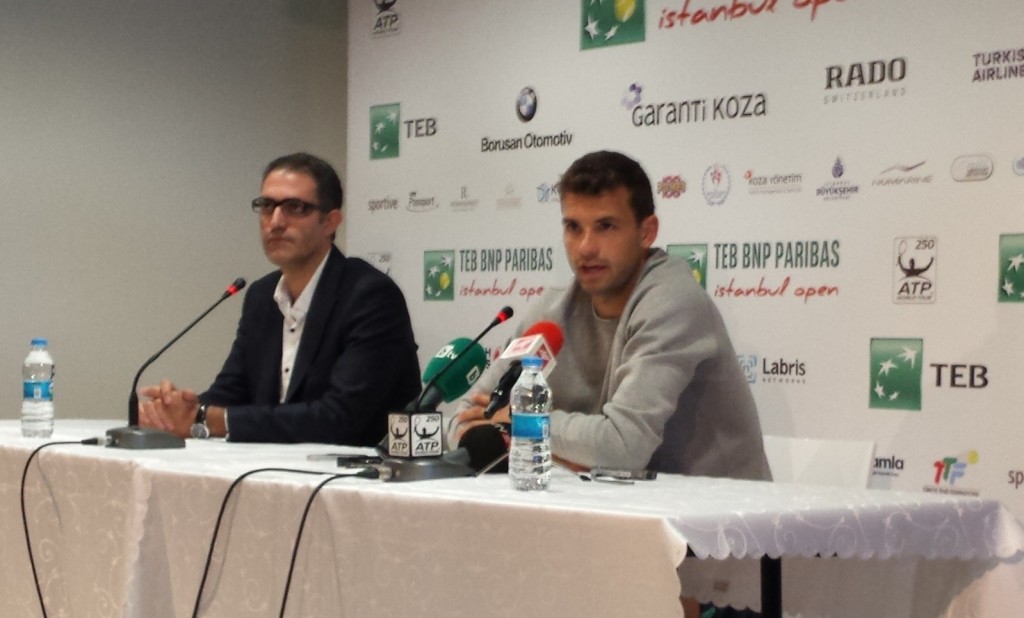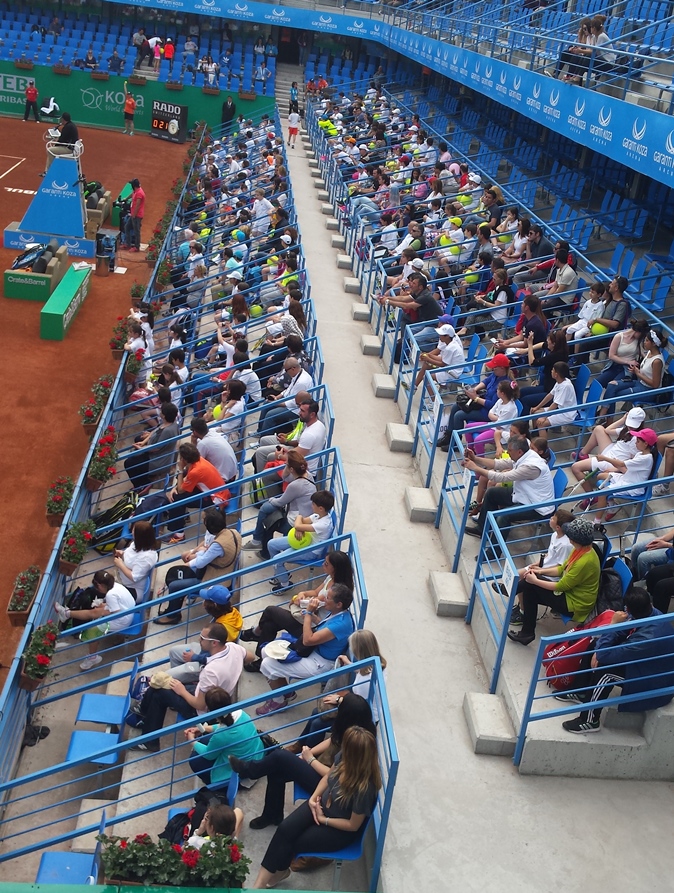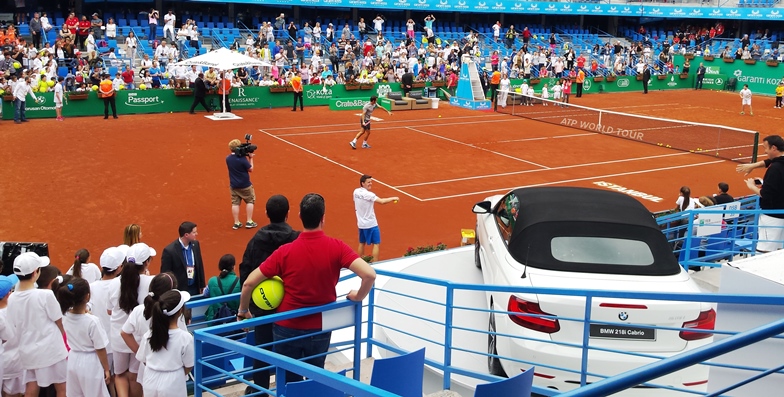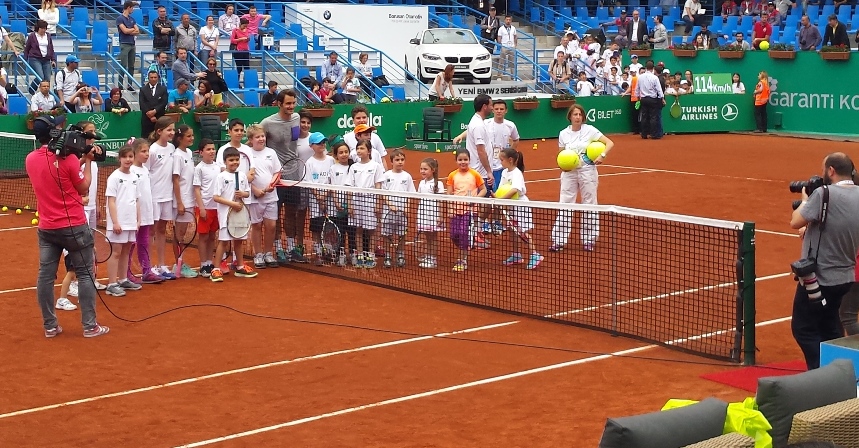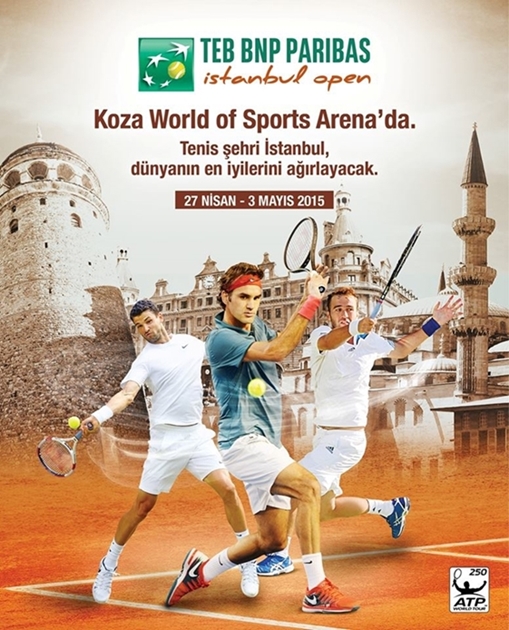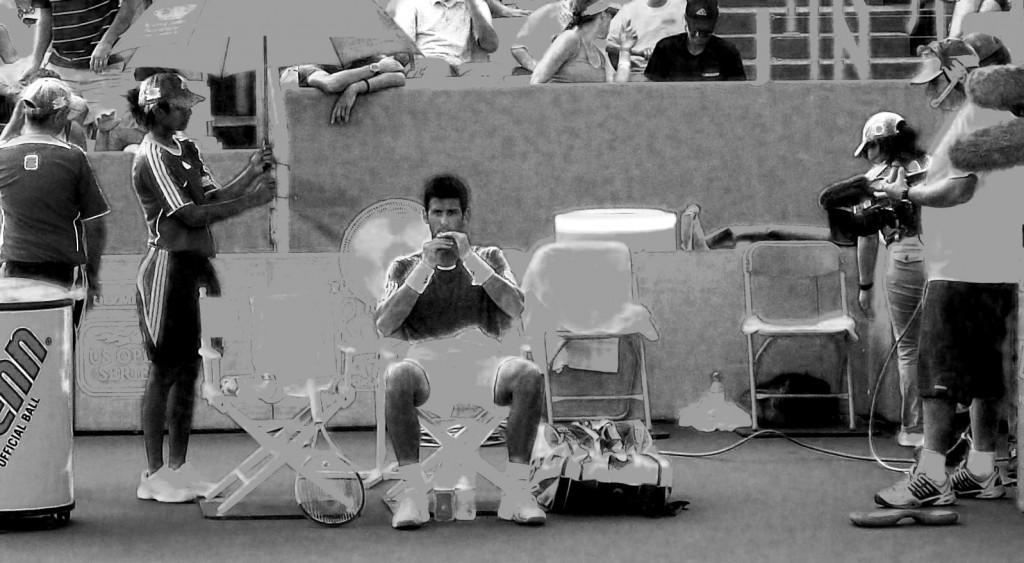After finishing the day late, and driving over three hours and fifteen minutes (8 PM to 11:15 PM) from the tournament site to the place where I stay, in the center of Istanbul, I am sorry to say that I do not have the strength to write an extensive report. However, I will scribble down four anecdotes from today that you may find unusual…
The first two took place in the beginning and the end of the encounter between Denis Istomin and Thomaz Bellucci. During the five-minute warm-up, as is the case at every tournament, the players were introduced by the announcer to tennis fans inside the center court (by the way, the announcer does this from mid-level stands in the corner, and not from courtside like it is done at most tournaments). In the middle of Istomin’s career highlights we heard the following phrase: “Istomin who came back from death at the age of 15 following a car crash…” I had my “really? really dude?” moment and wondered if I just heard him correctly. Did that really need to be announced to highlight a tennis player’s career? It happened on the way to a tournament in Uzbekistan but can someone tell me where that fits in Istomin’s career statistics? Was the announcer (or the one who wrote the script) so sure that it did not leave traumatic scars in the young man’s psyche, to the point where he/she felt it was appropriate to include it so that it can be heard on the loud speakers for all the public to hear? I am just relieved that Istomin does not understand Turkish.
Bellucci served an ace on the match point to close out the match, except that the line judge called the ball out. But, the chair umpire, Istomin, and Bellucci were so casual about how the call was incorrect that I almost felt sorry for the line judge who yelled “out” from the top of his lungs. As a matter of fact, if you watch the clip below closely, although the line judge just called his serve out, Bellucci is so sure that he won the match with an ace that you can see him pumping his fist in victory as soon as he notices the chair umpire getting off his chair to check the mark, and walking to the net to shake Istomin’s hand. Istomin also begins to walk to the net as soon as he sees the chair umpire come down. By the time the chair umpire gets to the mark and corrects it, Istomin and Bellucci are about to shake hands.
The third anecdote concerns the attendance. The number-two seed Grigor Dimitrov’s match drew barely over a thousand people in actual attendance, which is bitterly disappointing in more than one way. First of all, it shows that for many self-proclaimed tennis fans in Istanbul, this tournament really means “Federer Open” and not Istanbul Open. In other words, you are a Federer fan, not really a tennis fan. If this is your first ever opportunity to watch live, world-class ATP tennis, and you only chose to watch the elite player named Federer, and not the others, including a Major semi-finalist and the number 11 player in the world, and several excellent clay-court players, then you are not a tennis fan. See the clip below, filmed in the beginning of the second set during Dimitrov’s match against Andrey Golubev, and keep in mind that around 200 of the total number of spectators in the upper stands were from the neighboring Bulgaria, there to support Dimitrov. There is simply no excuse that can cover for the stands being this empty at 6:24 PM.
Last anecdote comes from Dimitrov’s press conference. A reporter asked about Dimitrov’s “unexpected practice” session with Federer when they first arrived to Istanbul. In the middle of the reporter’s question, Dimitrov interrupted: “Unexpected? Let me tell you how “unexpected” it was: we agreed on it in Monte-Carlo, one week ago.”
Friday features four great quarterfinal duels. I hope to see less empty seats, especially during the three matches other than the one involving Federer.
Follow MT-Desk on Twitter for live updates from Istanbul Open: @MertovsTDesk

